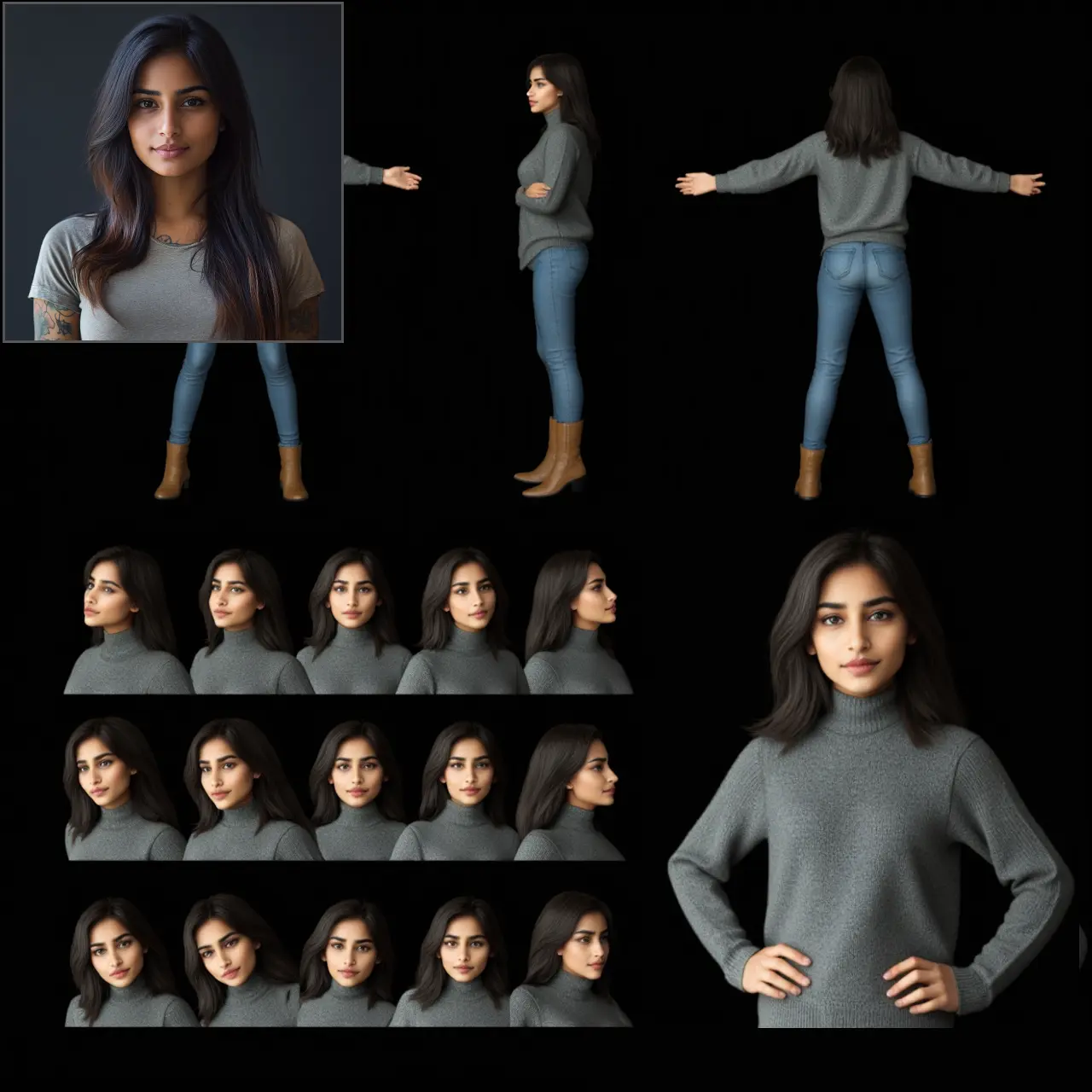ComfyUI Node: Audio Visualizer
SaltAudioVisualizer
CategorySALT/AudioViz/Audio/Util
SaltAI (Account age: 283days) Extension
SaltAI_AudioViz Latest Updated
2024-06-29 Github Stars
0.02K
How to Install SaltAI_AudioViz
Install this extension via the ComfyUI Manager by searching for SaltAI_AudioViz- 1. Click the Manager button in the main menu
- 2. Select Custom Nodes Manager button
- 3. Enter SaltAI_AudioViz in the search bar
Visit ComfyUI Online for ready-to-use ComfyUI environment
- Free trial available
- 16GB VRAM to 80GB VRAM GPU machines
- 400+ preloaded models/nodes
- Freedom to upload custom models/nodes
- 200+ ready-to-run workflows
- 100% private workspace with up to 200GB storage
- Dedicated Support
Audio Visualizer Description
Transforms audio data into visual representations for analysis and interpretation, aiding in audio editing and creative applications.
Audio Visualizer:
SaltAudioVisualizer is a powerful node designed to transform audio data into visual representations, making it easier for you to analyze and interpret audio signals. This node is particularly useful for creating visualizations that can help in understanding the structure and dynamics of audio files, such as music tracks, voice recordings, or any other sound data. By converting audio into visual plots, you can gain insights into the amplitude, frequency, and other characteristics of the audio over time. This can be beneficial for tasks like audio editing, sound design, and even for creating visually appealing audio-reactive art. The main goal of SaltAudioVisualizer is to provide a clear and intuitive way to visualize audio data, making it accessible and useful for both technical and creative applications.
Audio Visualizer Input Parameters:
audio
The audio parameter is the audio data that you want to visualize. This can be any audio file in a supported format such as WAV, MP3, OGG, FLAC, or AIFF. The audio data is processed to extract the relevant samples for visualization. The quality and characteristics of the visualization will depend on the quality and content of the audio file provided.
frame_rate
The frame_rate parameter determines the number of frames per second in the visualization. A higher frame rate will result in a more detailed and smoother visualization, while a lower frame rate will produce a more coarse representation. The frame rate should be chosen based on the desired level of detail and the length of the audio segment being visualized. Typical values range from 24 to 60 frames per second.
start_frame
The start_frame parameter specifies the starting frame of the audio segment to be visualized. This allows you to focus on a specific part of the audio file. The value is an integer representing the frame number, with a default value of 0, meaning the visualization will start from the beginning of the audio file.
end_frame
The end_frame parameter specifies the ending frame of the audio segment to be visualized. This allows you to limit the visualization to a specific portion of the audio file. The value is an integer representing the frame number, with a default value of -1, meaning the visualization will continue until the end of the audio file.
Audio Visualizer Output Parameters:
visualization_image
The visualization_image parameter is the output of the node, which is a visual representation of the audio data. This is typically a PNG image file that shows the amplitude of the audio signal over time, plotted against the frame numbers. The visualization helps in understanding the audio's structure and dynamics, making it easier to identify patterns, peaks, and other characteristics.
Audio Visualizer Usage Tips:
- To achieve a high-quality visualization, use audio files with a high sample rate and good clarity.
- Adjust the
frame_rateparameter to balance between detail and performance; higher frame rates provide more detail but may require more processing power. - Use the
start_frameandend_frameparameters to focus on specific sections of the audio file, which can be useful for analyzing particular segments or events within the audio.
Audio Visualizer Common Errors and Solutions:
"Invalid audio file format"
- Explanation: The provided audio file is not in a supported format.
- Solution: Ensure that the audio file is in one of the supported formats: WAV, MP3, OGG, FLAC, or AIFF.
"Audio file not found"
- Explanation: The specified audio file could not be located in the input directory.
- Solution: Verify that the audio file exists in the correct directory and that the file path is correctly specified.
"Frame rate must be a positive integer"
- Explanation: The
frame_rateparameter is set to a non-positive value. - Solution: Set the
frame_rateparameter to a positive integer value, typically between 24 and 60.
"Start frame must be less than end frame"
- Explanation: The
start_frameparameter is set to a value greater than or equal to theend_frameparameter. - Solution: Ensure that the
start_frameparameter is less than theend_frameparameter to define a valid range for visualization.
Audio Visualizer Related Nodes
RunComfy is the premier ComfyUI platform, offering ComfyUI online environment and services, along with ComfyUI workflows featuring stunning visuals. RunComfy also provides AI Playground, enabling artists to harness the latest AI tools to create incredible art.



